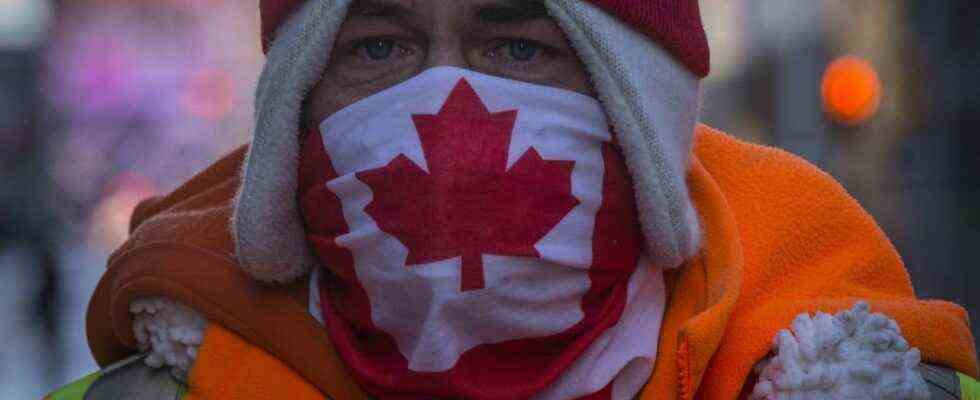For this series, The duty takes you behind the scenes of major stories by its journalists in 2022. In Ottawa, Boris Proulx lived in the noise of Freedom Convoy trucks.
Standing on a truck trailer transformed into a small stage, a speaker chants to the few demonstrators present that the police cannot arrest them, since it would be against the Canadian Constitution.
By simply turning my head, I can see that the police can, in fact, arrest them. Beyond the East Block of the federal parliament, on a Wellington Street blocked for three weeks by trucks, participants of Ottawa’s Freedom Convoy are being handcuffed.
“Stop talking bullshit ! That’s enough ! You are paid with my taxes, tabarnak, stop! yells a Quebec protester right next to me. The man is holding a Canadian flag in his right hand. He brandishes his left index finger in the face of a journalist from TVA Nouvelles who remains fully focused on his live broadcast.
I don’t want to miss even a second of the action. It’s so cold that I have to put my hand back in my pocket every time I grab my phone. The time to take a photo, write a tweet or post a short video on Instagram, I no longer feel my fingertips.
However, the action is long overdue. The atmosphere is tense, electric. After three weekends of occupation of the city center of the federal capital, the police are for the first time present in very large numbers. It’s Friday, and the authorities are determined to end the occupation before its fourth weekend. They are invested with brand new emergency powers.
Slow Confrontation
Helmeted, truncheon in hand, they advance at a snail’s pace. Several front lines are emerging. I’m pushed back to the Senate building. Demonstrators take out shovels to form a wall of snow, intended to slow down the advance of the police.
My phone dies: dead battery. Luckily, I meet the journalist from the newspaper The right, which is equipped with a portable battery. She lends it to me. “VAT sold! shouts a woman to a Radio-Canada journalist. The woman wears a flag swearing at Prime Minister Justin Trudeau as a cape.
I decide to take a walk behind the front, where the occupation continues almost normally. It’s much quieter. Happy, even. A can of gasoline is abandoned in the street. It smells of diesel smoke. Loudspeakers spit popular music. Protesters take a break from the confrontation with the police to dance in snowsuits. A few children are playing. I smell cannabis. The alarm of a backing truck sounds. “The media is the virus”, is it written on one of the behemoths.
A woman kneels in the middle of the street, away from the slow but inescapable police march. Agents, those of the Sûreté du Québec, were in front of the Château Laurier, a stone’s throw from the Parliament. Trucks parked for weeks are now surrounded. It feels like the end of the adventure for the Convoy.
No divine help
The protester begins to pray to the Lord. Other pious demonstrators join her. They hug each other in communion. “God, we ask for your help now. No divine action prevents the advance in the snow of the police, who easily step over the dam of snow erected to slow them down.
A generator placed in the middle of the street is running. Under a small camping shelter, I notice many propane tanks stored. A demonstrator asks me to help him move them, as the police confrontation draws near. I politely decline. I have to write my article.
The slow operation will not end until the next day, Saturday. the New York Times will remember that demonstrators, who had remained in their vehicles all that time, were dislodged “at point-blank range” by the police. The cover of the famous American daily profusely quotes the demonstrators who film themselves live on social networks.
A protester who fell in front of police on horseback had also started the rumor machine. the New York Times incidentally incorrectly reports that she was trampled on. “It’s very not false,” said a protester who thought she was dead. In fact, the Ontario Independent Investigations Office will conclude two months later that she was never seriously injured.
I finish the work marathon in the car, on my way to the show set Everybody talks about it. I can read in my notes: “Stick to the facts. I have a strange feeling that the facts won’t satisfy anyone.
